VOLUME 2, NUMBER 5 NEW YORK + LOS ANGELES
ELYSSA SAMSEL
Meet the songwriter behind the Apple TV series “Central Park”
CHIANTI
BLACKMON
Introducing AMDA’s VP of Equity, Diversity and Inclusion
JASON CHAET
Spotlight on AMDA’s Acting for Camera faculty filmmaker

ON THE COVER:
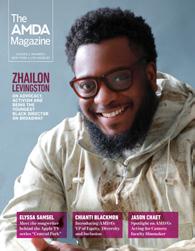
CONTENTS
AMDA Magazine is published by
6305 Yucca St., Los Angeles, CA 90028 amda.edu
Copyright ©2022 AMDA College of the Performing Arts. All rights reserved. Reproduction in whole or in part without permission is strictly prohibited.
Submissions, Updates, Feedback
Please send alumni and faculty updates, news tips, comments and suggestions to alumniservices@amda.edu.
AMDA College of the Performing Arts Jan Martin President
Media and Communications
Eric Almendral
Creative Director
AMDA Magazine Art Director ealmendral@amda.edu
Alumni Relations
Ryan Dejak Director of Alumni Engagement and Initiatives
AMDA Magazine Editor-in-Chief rdejak@amda.edu
Tara Hempstead
Alumni Services Coordinator
AMDA Magazine Editor thempstead@amda.edu
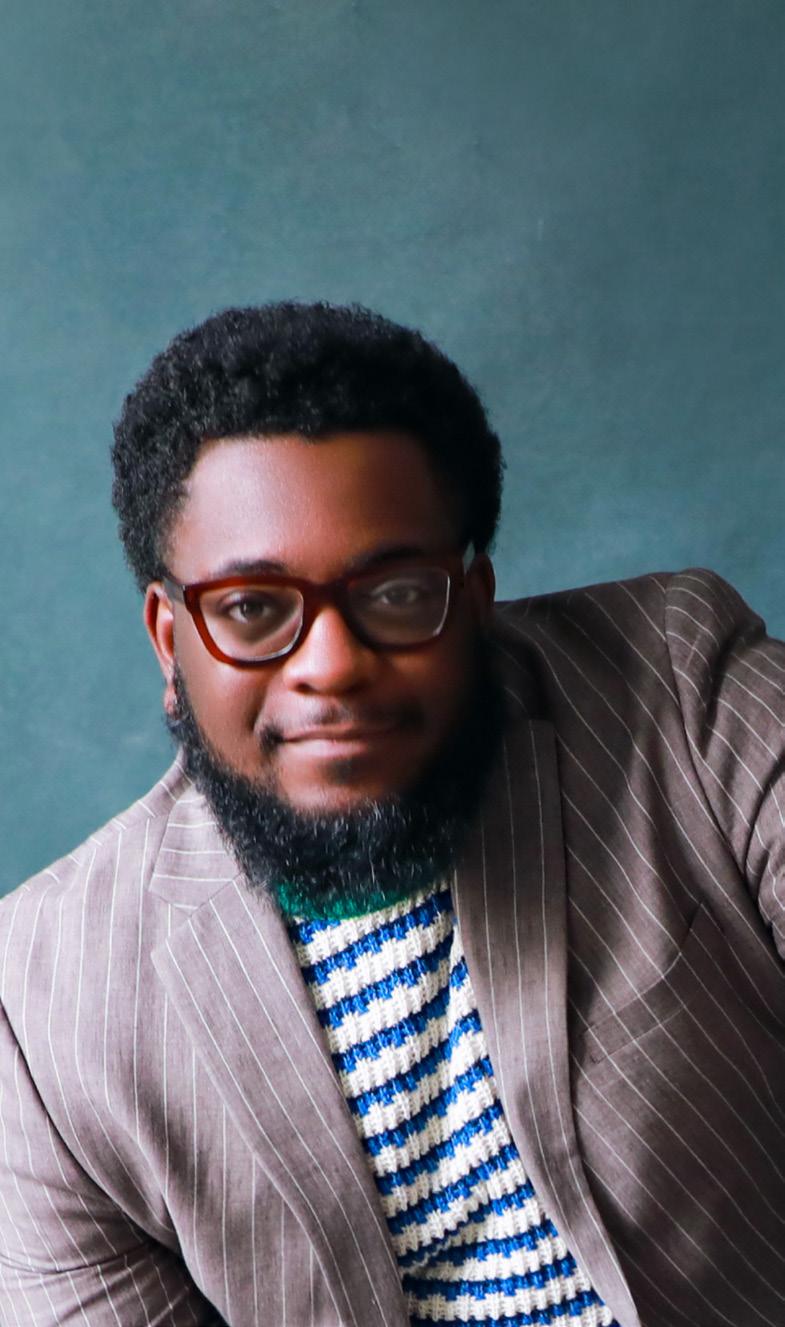
Contributing Writers
Tyler Thursby, Danielle Sepulveres
THIS PAGE
OPPOSITE PAGE
Opening Act: Janeeva Pettway and Jason Derulo by Imaginechina Limited/ Alamy Stock Photo
Elyssa Samsel by Michele Groskopf
Tune In: Frankie A. Rodriguez in “High School Musical: The Musical: The Series,” courtesy Disney+ AMDA on Broadway: Jeremy Pope in The Conversation by Marc Brenner
8
Zhailon Levingston by BrainArt Photography
Zhailon Levingston
Walk In With Your Crown On Zhailon Levingston directs for advocacy, community and award-winning Broadway shows.
Photo by BrainArt Photography


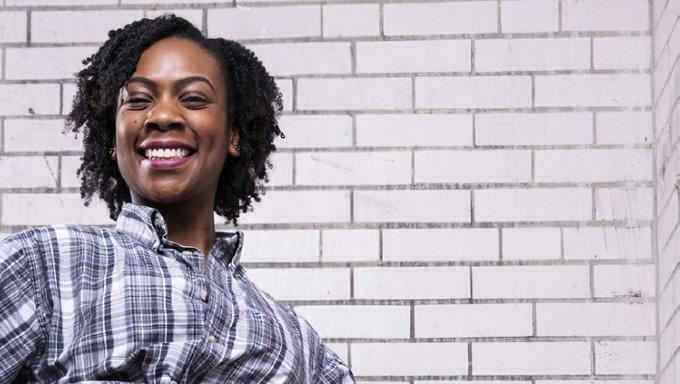


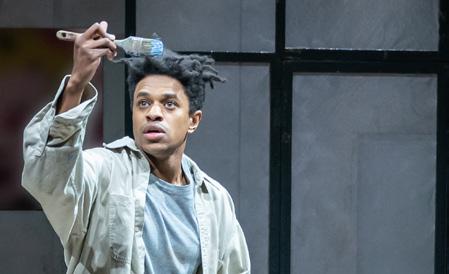
Going Off Book Former Central Park busker Elyssa Samsel finds that art does imitate life. 6 OPENING ACT AMDA NEWS & UPDATES 2 14 The Power of Representation For Zuri Foreman, success isn’t just personal achievement, it’s about lifting up entire communities. Tune In AMDA graduates star in some of the most binge-worthy shows on TV and streaming. 17 18 Commitment to Equity and Inclusion Introducing Chianti Blackmon, AMDA’s Vice President of EDI. AMDA on Broadway 44 graduates take the stage in 2022. INSIDE BACK COVER Gallery Recent AMDA performances 20
The Bridge Between Hollywood and Broadway
We recently caught up with AMDA graduate Vasthy Mompoint, the multihyphenate artist whose remarkable talent has been a mainstay on Broadway for over 20 years. After making her producing debut as a coproducer for Antoinette Chinonye Nwandu’s Pass Over — the first Broadway play to open following the COVID lockdown — Vasthy passionately advocated to bring performers and producers closer together. Here’s what she had to say about her long-spanning career — both as a performer and producer — and why diversity leads to better stories.
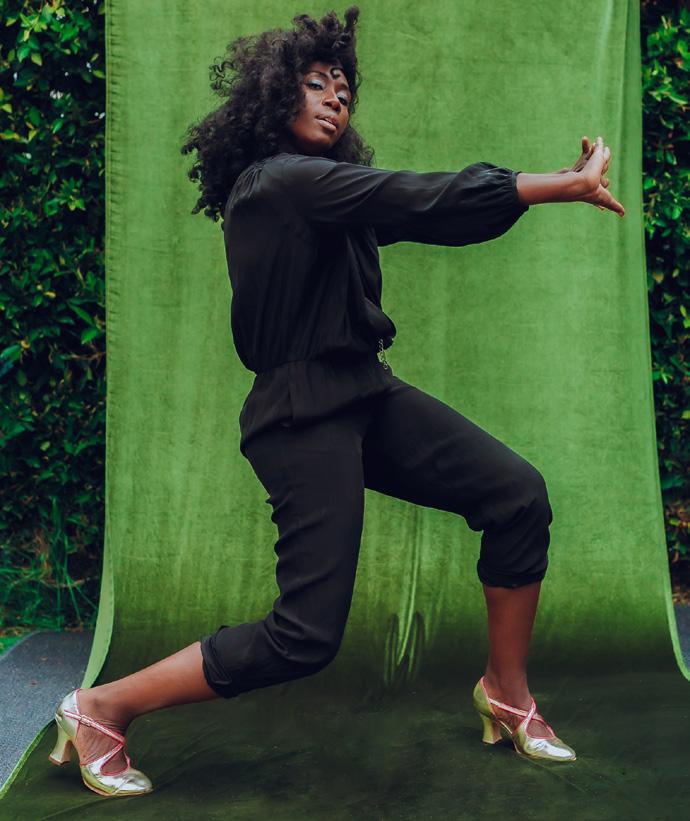
Tell us about your journey to become a multihyphenate artist and what your experience as a performer and producer has taught you. My first connection to art was dance. Dance led to singing, acting, playing guitar, and eventually to writing and producing. I used to be told I had too many hobbies and should focus on one thing. I’m glad I didn’t listen. Today, you almost always need several skills to succeed in this business.
I wrote my show Bits, Gummies, Folk, and Love and was later invited to sing it at 54 Below. That confidence led me to submit to the CBS sketch comedy showcase. After getting into the showcase, I moved to LA and, through the help of my amazingly talented castmates beside me, I learned to create my own story and translate that to film. Later, I created a web series for kids called “Vasthy and Friends.” Eric Cornell, a Broadway producer, saw my efforts and got me into a program called A Seat at the Table where aspiring producers can sit in the room and learn how it all works. On top of that, we all received a Broadway producer credit.
My experience taught me we need to create more of a bridge between the two worlds of performer and producer. We have the same goal to keep the show open, and
more unity can make that process easier.
Why is it so important to provide opportunities to early-career producers and producers of diverse backgrounds?
Diversity needs to be everywhere, not just the stage. It’s the only way to really make a difference in terms of color, race, age, everything. Diversity also allows you to tell better stories. In the future, I want to see more representation of the trans community, immigrants and people with disabilities.
What’s next for you?
I would love to produce and write musicals for the screen — not revivals, but brandnew musicals. I’d like to be the bridge between Hollywood and Broadway. I would also love to create content for kids, as they need all the joy and hope in the world they have been born into. And of course, I want to win 75 Oscars for my acting!
What wisdom can you share with aspiring artists?
If you don’t see it, create it. If you don’t create it, that’s OK — find the people who are. They need you and you need them.
Vasthy Mompoint resides in Los Angeles and remains active on Broadway, with credits including Good Vibrations, Hot Feet, Mary Poppins, Ghost, Soul Doctor, Rocky the Musical, SpongeBob SquarePants: The Broadway Musical and The Prom. Vasthy appeared in the 2020 film adaptation of The Prom, as both an actor and choreographer for the song “Dance With Me.” She recently lent her talents as a choreographer and actress to the 2022 biographical comedy film Weird: The Al Yankovic Story and has joined the cast of the hit Disney+ series “High School Musical: The Musical: The Series.”
Vasthy Mompoint is carving out a path to tell the best stories.
2 || Magazine || amda.edu
Vasthy Mompoint
OPENING ACT
Art Is Activism
Asia Kate Dillon is changing the entertainment industry, one memorable performance at a time.
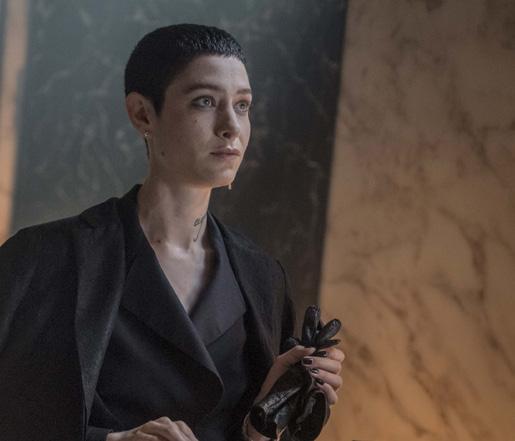
For Asia Kate Dillon, celebrated nonbinary actor and AMDA graduate, helping further the dialogue concerning gender identity is a major motivating factor behind their work. While Asia’s contributions as an activist have cemented their role as a champion for inclusion, their ever-growing list of lauded performances has also made them a preeminent figure in the entertainment industry.
Asia’s prolific television and film career began with their breakthrough role of Brandy Epps in Netflix’s “Orange Is the New Black” — an opportunistic inmate with a penchant for violence. Shortly after, Asia made history with their role as Taylor Mason in Showtime’s drama “Billions.” Asia’s portrayal of Axe Capital’s brilliant intern was recognized as the first nonbinary character to appear on American mainstream television and garnered several Critics Choice Award nominations.
Asia made their feature film debut in the role of the Adjudicator in John Wick: Chapter 3 - Parabellum, the Keanu Reeves action thriller that grossed over $327 million in box office sales.
Asia’s star continued to rise on the stage. During the 2021–2022 season, they made their Broadway debut in the limited run of Shakespeare’s Macbeth, starring as Malcolm, the eldest son of King Duncan. With a cast helmed by actor Daniel Craig,
The
Art of Translation
Anabel Dueñas ensures that nothing is lost in translation.
Compelling narratives have always demonstrated a remarkable ability to transcend traditional language barriers. Ensuring nothing is lost in translation is only possible through the thoughtful efforts of people like Anabel Dueñas — a multifaceted AMDA graduate with more than 20 years of teaching experience.
At AMDA, Anabel found an immersive and creative environment that instilled a new focus for her craft and the professional auditioning process. After completing her training, she returned to her home in Mexico City and began translating many of the musical theatre songs she was introduced to at AMDA. The efforts paid off, drawing the attention of local casting directors and landing her the leading role of Narrator in Joseph and the Amazing Technicolor Dreamcoat.
Throughout her career, Anabel has introduced Mexican performing artists and enthusiastic audiences to the vast

the production was reviewed as one of the most anticipated theatrical events of the season.
Asia continues to defy convention with their original work as a creator and producing director for MIRROR/FIRE Productions, a company devoted to promoting narratives that challenge the white, gender normative and heteronormative paradigms. Although Asia’s career has only just begun, the advocacy they promote has already left an indelible mark on the performing arts.
musical theatre repertoire. Translating and interpreting is no small feat — differences across cultures and limitations of language can compromise the integrity of the original work, muddling the underlying message. Anabel credits her gift as a storyteller who recognizes the importance of preserving the emotions of the source material to her experience in this work.
Anabel found success as a translator and Spanish-language voice-over artist for popular children’s shows including “SpongeBob SquarePants,” “Dora the Explorer,” “Peppa Pig,” “Masha and the Bear,” “The Little Big Club” and “My Little Pony.” Because of her broad experience and ability to interpret the emotional journey of challenging material, Anabel was approached to translate the song lyrics of Broadway’s The Prom for a Mexican production. Adapting The Prom — lauded for its heartfelt meditations on LGBTQ+ youth and comedic performances — requires
nuance. Previous attempts to adapt it for Spanish-speaking audiences left production teams wanting more. Anabel met the challenge by preserving the emotional sentiments that originally resonated with English audiences. She hopes bringing this story to Mexico can help change minds and attitudes regarding its central themes and promote a greater atmosphere of acceptance long after the final curtain falls.
By introducing new audiences to these powerful works, Anabel is amplifying the harmonious effects of theatre and inspiring the next generation of storytellers.
Asia Kate Dillon in John Wick: Chapter 3 - Parabellum
Anabel Dueñas
amda.edu || Magazine || 3
OPENING ACT
Finding Center Stage
Janeeva Pettway is always prepared for the next step.
For interdisciplinary artist Janeeva Pettway, no feeling compares to the joy of fulfilling one’s dreams. Since graduating from AMDA’s Dance Theatre Program in Los Angeles in 2017, Janeeva has accumulated a host of high-profile performance credits, appearing alongside prolific artists such as Kanye West, Justin Bieber, Megan Trainor, Quavo, Meek Mill and Tory Lanez. She has also performed as a main dancer for popular artists like Saweetie and fellow AMDA graduate Jason Derulo. With an ever-expanding résumé that reads like a who’s who of the contemporary music industry, Janeeva can only describe her situation as a blessing.
Janeeva’s star-studded credentials include several nationally televised performances on BET, NBC and ABC; popular music videos and world concert tours. As she tells it, developing the poise required to perform before masses of fans took time to develop. “I used to get nervous all the time. Now I thrive off that energy,” she says. “It’s so amazing to be able to give the audience an experience, not just a show.”
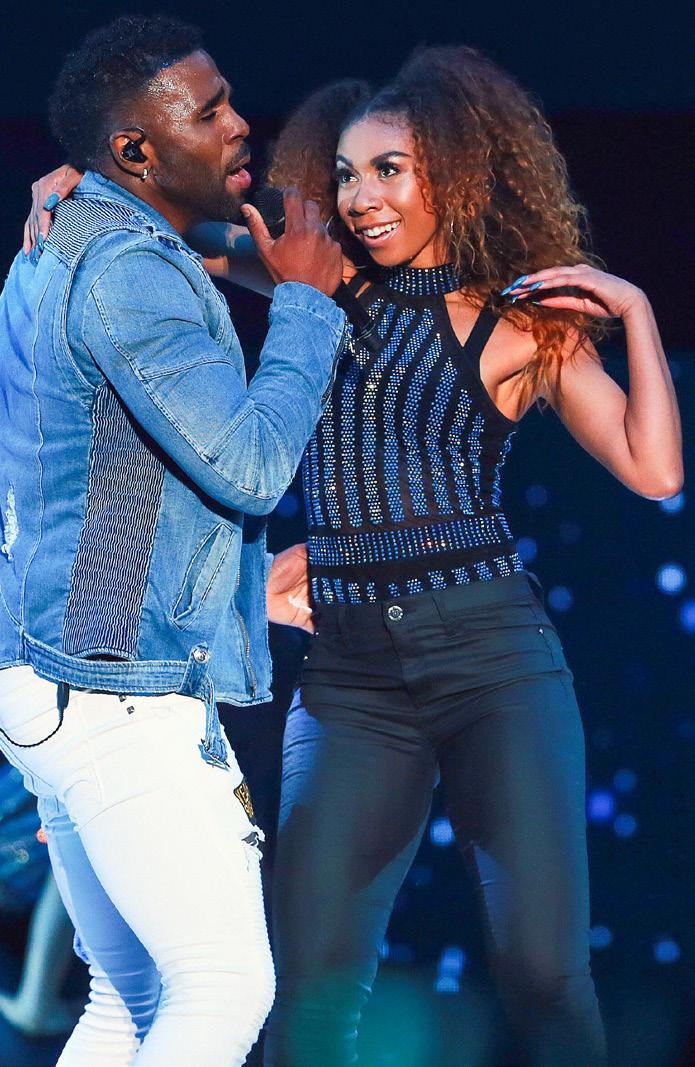
Janeeva’s AMDA education played a key role in her development, offering a creative outlet to refine her professional skills as a dancer. Her coursework provided extensive training in Contemporary, Ballet, Modern, Jazz, Hip-Hop, Tap, Broadway styles, and other forms of dance. “AMDA really got me together,” says Janeeva. “Doing the Black Box shows each semester helped me get used to a live audience. Dance for the Camera helped me understand and improve what I looked like on film, increasing my camera awareness.”
Janeeva’s passions extend into teaching, writing, singing and recording. “Music acts as my therapy,” Janeeva says. “Dance can be interpreted in so many ways and I wanted a clearer way to get out how I feel. To me, that was
writing it down in words.” Recalling those first studio sessions, she says, “Those experiences were so scary. But it was the most vulnerable I had ever been in my life.” Janeeva adds, “I felt so much weight lifted off my shoulders when I was able to release, feel and heal through my music.” In the future, Janeeva sees herself venturing into more of a creative director role, developing concepts for live performances and music videos. “It
stimulates me mentally. I’m so happy when I can tap into that creative side.”
What advice can Janeeva offer other aspiring dancers who dream of one day performing alongside their favorite artists? “The show is bigger than you,” she notes. “If you want to be successful in this industry, you need to be on it. Know your steps — left, right and backward. Work harder than everyone else and you’ll always be prepared — for any situation.”
IMAGINECHINA LIMITED / ALAMY STOCK PHOTO
Janeeva Pettway (right) performs with fellow AMDA grad Jason Derulo at a concert in Shenzhen City, China
4 || Magazine || amda.edu
Those Who Can, Teach
The AMDA classroom is Jason Chaet’s springboard for success.
Great teachers are always remembered by their students, often for their ability to instill confidence in everyone who steps foot in their classroom. For Jason Chaet, longtime faculty member at AMDA’s New York campus, inspiring future generations of artists has become a defining characteristic of his work, both onstage and off.

In addition to serving as AMDA’s Chair of the Camera Division, Jason brings a wealth of experience to AMDA’s new Acting for Camera program. Jason began his career in New York’s famed Ensemble Studio Theatre. There, he developed new works by notable playwrights, including David Mamet and Arthur Miller. Now Jason is recognized as an awardwinning filmmaker, theatre director, producer and editor and accomplished acting teacher.
Jason’s multiple award–winning film Putzel has appeared in over 50 film festivals all over the world. More recently, his feature film Seneca had its world premiere at the HBO NY Latino Film Festival, going on to win multiple awards at other festivals, including the prestigious Ultra Indie Feature Prize at the Woodstock Film Festival and Best Picture and Best Director at the Phoenix Film Festival. Seneca is available to stream on HBO and HBO Max.
SIX
AMDA graduates take the crown.
“The MegaSIX” is the encore song in the international hit Broadway musical SIX, and there are five mega-talented AMDA graduates who have had the opportunity to perform it. Created by Toby Marlow and Lucy Moss, SIX tells the stories of the wives of Henry VIII as they reclaim their identities out of the shadow of their infamous spouse in the form of a pop concert.
Brittney Mack made her Broadway debut as Anna of Cleves in SIX. Prior to that, she starred in the show’s Chicago Shakespeare Theatre and A.R.T. productions and is featured on the Grammy nominated Original Broadway Cast album, SIX: Live On Opening Night. Brittney recalls the rehearsal process and how she brought herself to the role. “I was given a lot of liberties with her. I was able to take a lot of what I knew about her and just infuse it.” states Brittney. “Cleves is the secret sauce.”
What are you most excited about for AMDA’s new Acting for Camera program?
It’s a tough choice because I love our on-camera acting classes so much, but if I have to pick one thing, it’s the content creation classes. It’s so important these days for artists to be multifaceted. To be able to inhabit someone else’s writing as a performer and also create your own work. It opens up so many different career paths and gives students an incredibly diverse skill set after they graduate. The chance to take multiple classes in screenwriting, basic film production, film and TV history and then eventually make your own short film — along with all the other performance opportunities — before you graduate is invaluable. It took me years after graduating from school to accumulate the skills we’ve packed into the content creation classes, and I’m really excited camera program students are getting it now.
Joy Woods also landed her debut Broadway role in SIX, taking on the part of Catherine Parr. When Woods left to star in the Chicago Shakespeare Theatre musical adaptation of The Notebook (directed by AMDA graduate Schele Williams), fellow graduate Brennyn Lark took over the role of Catherine Parr. Leandra Ellis-Gaston is the latest graduate to be crowned on
Broadway as Anne Boleyn, while Didi Romero is rocking stages across the country as Katherine Howard in the Aragon leg of the show’s North American Tour.
It is no surprise that AMDA graduates continue to take their rightful place on the throne in this groundbreaking and award-winning musical. Who will be next to wear the crown?
 JOAN MARCUS
Brittney Mack (center) as Anna of Cleves in SIX on Broadway
JOAN MARCUS
Brittney Mack (center) as Anna of Cleves in SIX on Broadway
amda.edu || Magazine || 5
Armando Riesco and Claudia Morcate-Martin in the feature film Seneca, directed by Jason Chaet
OPENING ACT
GOING OFF BOOK
Life is unpredictable. One day you might be a busking violinist with Broadway aspirations performing to throngs of pedestrians in New York’s sprawling Central Park. The next, you find yourself composing music for some of your personal musical theatre idols, opening doors for other female songwriters and creatives along the way.
For Elyssa Samsel — AMDA graduate and current composer for Apple TV’s critically acclaimed series “Central Park” — the journey has been anything but conventional. Although Elyssa originally envisioned herself following in the footsteps of Broadway performers like Idina Menzel and Leslie Odom Jr., her AMDA experience would prove to be life changing.
Today, Elyssa credits her AMDA education with helping her fall in love with the songwriting process and imparting the skills she would refine to forge her own way. With several accolades to her name, including songwriting credits for Disney’s 2017 “Olaf’s Frozen Adventure,” Elyssa’s story is confirmation that good things can materialize for those with the courage to veer from the script.
Elyssa hopes her example can similarly embolden others to tune out feelings of self-doubt. As she tells it, sometimes the best advice is the kind you don’t take. Instead, she’s used it to reinforce her own sensibilities as an artist. Elyssa’s star continues to rise with several exciting projects, including her original musical Between the Lines, based on the novel by New York Times bestselling author Jodi Picoult and her daughter Samantha Van Leer, and a few surprises in the film world. The next time you read a piece of sheet music, look closely — you just might recognize Elyssa’s name.
What skills did you learn at AMDA that have been useful as a composer and storyteller?
Everything I learned at AMDA pointed me in this direction. When I auditioned for AMDA, the goal was to get on Broadway. Eventually, a transformation happened. I fell in love with dissecting the songs we performed in class. My training changed the way I thought about everything — from the lyrics of the music to the relationship between the actor and what the composer wanted. Writing out what the subtext was for each lyric — for every phrase of music — is now how I approach songwriting. I’m always thinking the music should be the subtext to whatever the lyric is going to be, and each lyric then sits on top of the music. I want the music to be the emotional subtext that’s telling the story regardless of what you’re singing lyrically. I’m so grateful that AMDA led me through the process of what goes into a song and then performing it, seeing that it was possible for a female to contribute to the anthology of songwriting.
It’s still relatively uncommon to see musical theatre songs written by women. Why do you think this is?
There was this period of time where every girl fresh out of AMDA was singing “Taylor, the Latte Boy” by Marcy Heisler and Zina Goldrich. It allowed girls of any type to be different, quirky and weird and make it their own. I looked at the top of the sheet music and noticed that two women wrote it and I had never — at AMDA or before — seen a piece of sheet music that had two women’s names. That moment made me realize that women were less represented as songwriters in musical theatre. But it’s really changing now.
Your journey as a songwriter for animation began in 2017, when you and your music partner Kate Anderson were brought on board to write songs for the Disney featurette, “Olaf’s Frozen Adventure.” How did this experience come about and how did it lead to your work on Apple TV’s “Central Park”?
When I look back, I was so in love with every Disney movie that came out. They were the backdrop to my childhood. The dream was to be in Beauty and the Beast onstage. That morphed into, what would it be like to write songs for these animated musicals that scored my childhood?
My writing partner, Kate Anderson, and I had been working on a fairy tale-esque theatre piece in the BMI Lehman Engle Musical Theatre Workshop. Our moderator had been approached for recommendations for this project. When we auditioned, we went overboard and wrote like, five songs — they just wanted one, but we were like, nope, this is what unbridled enthusiasm looks like! We ended up getting that job. Writing songs for those actors — Josh Gad, Kristen Bell, Idina Menzel, Jonathon Groff — those were all actors who I had been obsessed with because they had been in musical theatre. We became friends with Josh Gad. He was putting together this animated TV show called “Central Park” and approached us to write songs for the pilot.
Expanding friendships is so valuable. We learned how to do that at AMDA. Just getting along with your peers and people you’re working with in a show is vital and can lead you to other opportunities.
What was it like writing for “Central Park” and finding individual voices for each character?
The creators, Josh Gad and Lauren Bouchard, wanted to make TV’s first animated musical series. They wanted to make sure all the songs were different and eclectic because it’s representing the real Central Park, which is filled to the brim with people of every possible background. It’s kind of a love letter to Central Park in its own way. From the first season, we tried to make sure the earliest songs would set up each character’s sound and accentuate
6 || Magazine || amda.edu
Former Central Park busker Elyssa Samsel finds that art does imitate life.
their vocal personality. I think that was a concept that first became ingrained in me at AMDA, seeing who would sing each song in class and how the songs the teacher selected for them focused on their strengths.
You spent a lot of your early days in New York City, busking in Central Park on your violin. As a songwriter on a series set in

Central Park and narrated by a busker, it must feel immensely surreal. It’s completely full circle. When I was busking with my violin in Central Park, I was always handing out my songs on CDs. Someone in the music industry suggested that I find a boy and write songs with him and the two of us could be an act. I probably could have listened to him — but I didn’t. Sometimes I think it’s important
not to take all the advice you’re given if it doesn’t resonate.
That time for me was all about resilience and trying to stay positive. I think having a positive outlook is the greatest gift you can give yourself because there’s so many opportunities in this business. There’s not just one part. You can make your own part, your own show, your own way in this business.
MICHELLE GROSKOPF
Elyssa Samsel in Central Park
amda.edu || Magazine || 7
“We tried to make sure the earliest songs would set up each character’s sound and accentuate their vocal personality. I think that was a concept that first became ingrained in me at AMDA.”
For Zhailon Levingston — Louisiana native, AMDA graduate and multi-hyphenate artist — storytelling is a sacred duty, a compulsion borne from an earnest desire to lift the voices of his community and promote social justice. Since graduating from AMDA, Zhailon has been making waves throughout the performing arts industry, making his Broadway directorial debut as the resident director of the acclaimed Tina: The Tina Turner Musical. In 2021, Zhailon made history as the youngest Black director on Broadway for his work on Chicken & Biscuits.

CONTINUED
ON PAGE 10 »
8 || Magazine || amda.edu
PHOTOS BY BRAINART PHOTOGRAPHY
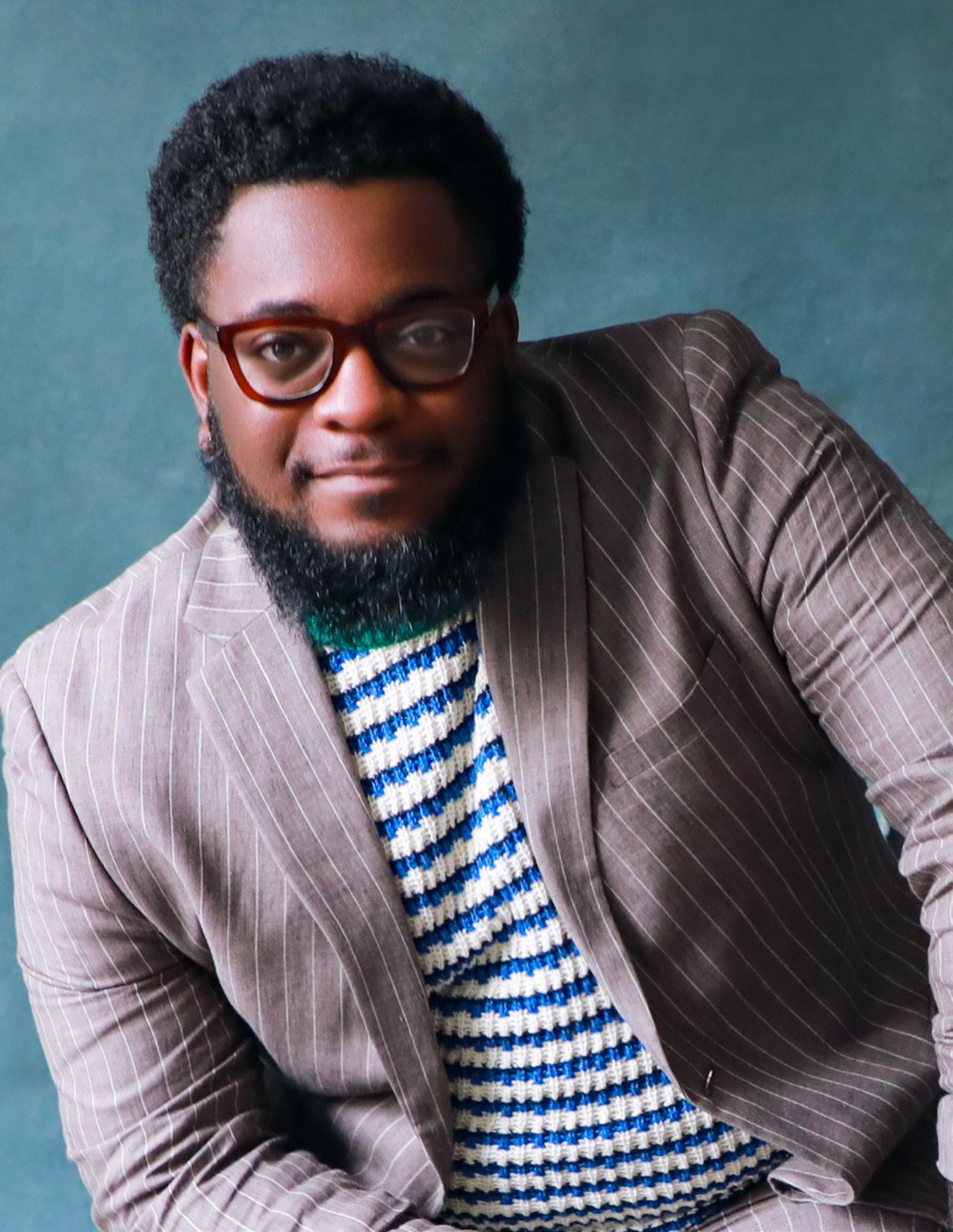
amda.edu || Magazine || 9
Zhailon’s other directing credits include The Years That Went Wrong, Chariot Part 2, Mother of Pearl, and the South Korean premiere of Hadestown. Previously, he collaborated with the creative team for the inaugural Antonyo Awards, writing a variety of original works, including The Hole: A New American Play, which was featured at the 2021 Genesis Festival of New Plays. Zhailon is the cofounder of the Broadway Advocacy Coalition, where he presently serves as the director of industry.
We recently sat down with Zhailon and discussed his background and creative process.
Can you tell us about your background and how it led to your interest in directing?
I grew up going to a performing arts school — not because it was a performing arts school, but because it was a magnet school, and my mom wanted to put me in the best elementary school she could find. The blessing of that exposed me to theatre at such an early age. I remember seeing my school’s production of The Jungle Book when I was in kindergarten, and that had a real, lasting impact on me.
Back then, I didn’t know that theater was a job. I just thought it was a thing we did in our school that was fun. But my fifth grade’s production of Aladdin pretty much changed my life. I was cast as the short, Black, chubby Aladdin. It was in that grade I realized theater was a job. I could
just tell people when they asked what I wanted to do when I grew up, “This thing, this thing, this thing!” From that point on, I was involved in community theater, doing about three or four shows a year every year of high school.

In Louisiana, we didn’t have a robust theater scene, so you occasionally had to do other things than perform. Sometimes I was choreographing, other times I was codirecting. I remember writing pageants for my church, too. Those tools were already developing, but I was of the understanding that you’re supposed to act for a really long time until someone taps you on the shoulder and says, “You can direct now.” That’s not necessarily how it goes.
What shaped your early perceptions of directing?
I didn’t see anyone that was my age and looked like me directing. Honestly, it’s still hard to find in the context of professional theatre in New York. I had seen lots of representation of Black people across the field in general, from a very early age. The idea of our bodies being on stage was never unbelievable or extraordinary to me. But there was this weird thing with directing where it felt very unusual for Black people, Black men in particular, leading a room in theatre.
Choosing directing as my path required being in the crucible of New York and
figuring out how to make money. Directing was not only what I was good at and found intellectually validating, spiritually, it also felt like what I was supposed to be doing. My ministry was going to be built on the medium of directing.
How was your experience at AMDA and in what ways did it prepare you for your current career?
I went to AMDA LA through the BFA Music Theatre program and I had a really great experience. I think the thing that was most fundamental for me was the freedom and opportunity to create my own work. I still hadn’t told myself directing was something I could do right out of college, but the skills were starting to be honed through my coursework. At AMDA, I was able to do my own student project, produce my own musical and create a song cycle with a close friend of mine — all while performing and taking classes. In the summers, I would go back to Louisiana and direct.
After graduating from AMDA, you earned your Equity card in the Los Angeles premiere of The Christians and then moved to New York City. What did those early days look like?
My first job was selling Broadway tickets on the street, which was not fun. Still, I was auditioning and participating in workshops, occasionally receiving
ZHAILON LEVINGSTON (CONTINUED) »
“I’m grateful I have the opportunity to inspire someone…
10 || Magazine || amda.edu
They Can see someone like me and say, ‘OK, there’s a him, so there can be a me, too.’”
callbacks for things that were exciting to me. But very quickly I felt like, this isn’t my ministry.
In 2018 I decided to quit any day job I had and just pursue directing. I went back to Louisiana to direct and choreograph a show, telling myself, “If I can do this big ol’ show, then I can just do it.” And I did. After those three months, I never had a day job again. I just grinded and networked to make things possible. I didn’t know how I was going to pay rent for about four years, but that was my path.
Do you see yourself as a multi-hyphenate artist?
I totally do, that was actually my Instagram bio for many years! We live in a time where it doesn’t make sense, on multiple levels, to just do one thing. It doesn’t make sense for me, artistically, to assume that just because you’re a dancer, you can’t act; just because you’re an actor, you can’t sing. It’s presumptuous in these times and doesn’t make sense from a business standpoint to not try to create as many streams of income as possible, especially during such a turbulent time in our industry.
I don’t think it’s limited to our industry, either. People are becoming multihyphenate in different careers as well. I think it’s the way in which our generation is navigating the system that we’re living in.
I used to tell myself — and I’ve started to tell myself more now — that I am in the service of story under the direction of form. That allows me not to be pigeonholed into any one kind of identity. I’m just here to tell a story, and the story will tell me how it needs to be told. Sometimes I’ll need to write it, sometimes I’ll need to act it, sometimes I’ll need to direct it, sometimes I’ll need to produce it. My job as an artist is to be obedient to the story.
Activism is a major part of who you are as an artist. What inspired your #WORDSONWHITE project and how did it come together?
Around the same time I was auditioning, I started this organization called #WORDSONWHITE, which was started in response to the deaths of Alton Sterling and Philando Castile. It started as a one-night-only thing and developed from there. I had access to a small theater downtown and somehow got people to show up and read words from other artists, thought leaders and activists from the past.
My friend Rob and I came up with this idea to roll out this 25-foot-long white canvas, and instead of doing a talkback, we had people come up on stage with markers, pens and crayons to respond to what they just saw on the canvas. The dynamic of that was you’d end up having a lawyer on their knees alongside a 13-year-
old girl, and this is how they’d first relate to each other. That initial idea developed into an entire campaign where we would go and do this work in parks, churches and schools. And all the while, I’m meeting playwrights and becoming very immersed in the National Black Theatre and Fire This Time Festival.
Most of the work I do is socially conscious. Activism and advocacy was my way into directing things.
Is that what inspired you to cofound the Broadway Advocacy Coalition, a Tony Award–winning organization uniting artists, experts, students and community leaders to use storytelling and artistry to combat systemic racism?

The Broadway Advocacy Coalition came out of the Black Lives Matter movement. When we first started, the majority of our work was about getting people within the theatre industry to get outside of it. We were advocating for policy change. During the George Floyd incident, we thought, “We should look in our own backyard. We should turn inward and see all the ways in which policies are perpetuating antiBlackness within our industry.”
It’s been an interesting journey because people talk about theatre being a microcosm of the bigger world. I think systemically it is too. What’s going
CONTINUED »
EMILIO MADRID
“Most of the work I do is socially conscious. Activism and advocacy was my way into directing things.”
amda.edu || Magazine || 11
Zhailon Levingston with Chicken & Biscuits writer Douglas Lyons
on systemically in theatre is going on in the larger world as well. It was both heartbreaking and inspiring to take on all of this stuff going on in our backyard as a way of addressing what’s going on in the country.
What I hope is that Black people aren’t just stand-ins for representation. Rather, what’s represented is our whole being — our intellect, our spirit, our culture, our practices, our gods. That representation happens on stage, off stage, behind the curtain, in the audience. I think so often we’ve asked permission to be here as opposed to just taking the space we need to do our work.
So many people have already died for us to do that. I think we’re living in a time where you either choose to wear your crown or you don’t. I think the theatre industry is facing a reckoning of what it looks like when so many of us walk into it with our crowns on.
Are there other initiatives the Broadway Advocacy Coalition is working on that excite you?
The Broadway Advocacy Coalition is supporting a lot of programs like the Cody Renard Richard Scholarship. It’s been really enriching to see that program grow and see the kinds of applicants that we get there. It’s impossible to pick because they’re all so unbelievable. This new generation is so inspiring and amazing. We also have artist fellowships where we give resources to artists who are concentrating on how their work fits with advocacy efforts.
From your point of view, what are the greatest challenges currently facing the theatre industry and do you believe measures are being taken to appropriately respond?
I think the greatest challenge facing the theatre industry is an unbelievable lack of imagination in the face of resistance; the resistance being a changing world that will no longer hold the old ways of doing things.
I think we see COVID as this kind of disruption when I think it’s really been a flashlight, shining light on a system that has been doing things a certain way for many, many, many years. It’s kind of a
red herring. Either you change the way you’re doing things and make things more sustainable and humane for the bodies that are actually contributing to these shows every night or you’re actually going to cease to exist.
It’s so clear there is no going back to normal. And it’s so clear for those who try to go back to normal, their shows will close, their actors will rebel, they’ll lose money. Now there are real consequences to not adapting.
me, is, are you going to adapt or are you going to die?
You’ve directed several productions of Douglas Lyons’ Chicken & Biscuits. What was it like bringing the show to Broadway?
The experience was like being shot out of a rocket. We found out in May of 2021 that we were going to go to Broadway, that we would open and start previews in September. That’s not a lot of time. We had to go into production in June and at the end of the job, I had to go to Korea to direct the Korean premiere of Hadestown. There was just so much happening.
The gig was just about waking up each day and doing the work, and doing the work, and doing the work. For a long time, I didn’t have any emotional reaction to what was happening outside of thinking, this is cool and exciting. It was also the best education possible in terms of how this industry works, how the business works, how departments work with each other, where there is resistance to new ideas and where there is openness to new ideas.
It’s actually been rather uninspiring to see the lack of imagination from the field in terms of the way we do our work. Not just the way we address certain kinds of societal problems, but literally the way we look at the whole machine.
I think a remedy is to not see Broadway as this special place but as a regional theatre, just like other states have a regional theatre space. The regional theatre has a certain responsibility to its community that commercial theatre doesn’t necessarily share. I’d just like to see more ethos from the commercial world that is more rooted in community and the way it treats bodies, the way it treats audiences and the way it welcomes people. The big umbrella that everything falls under, to
The show is hilarious, funny and heartfelt. As a director, it was really easy to tell whether we were on the right or wrong path because either I’d feel something and I’m laughing or I’m not. That was always a marker of production success — are we still having fun every day, are we laughing every day, are we becoming more of a family every day? And the answer was always yes. There were battles you had to overcome when putting a Broadway show up in general, but it was always outweighed by the joy.
What did you find most rewarding about this directing experience?
I think initially, the most beautiful part of the process for me was just the amount of people we were able to bring into the process. We had a completely Black creative team, which was such a blessing to have. I was in charge of overseeing the core creative team, but they’re in charge of finding their associates and assistants. They brought in even more people who aren’t typically in this space.
ZHAILON LEVINGSTON (CONTINUED) »
“
12 || Magazine || amda.edu
Being an artist is not something we get to do, it’s something we have to do.”
I remember looking around when we had our first circle, thinking, “Oh my god, this is the world we created.” There were so many different types of people — Black, white, old, young. Lots of women in the room, lots of Black women in the room. That was something I cherished so much.
With Chicken & Biscuits, you became the youngest Black Broadway director and second youngest director overall. How did that distinction resonate with you? That whole experience was just cool to my nerd mind, the part of me that’s obsessed with musicals, Broadway and plays. But I didn’t really understand it to be a real part of history. I don’t even know if I really understand it now.

Sometimes I tell people the longer I talk about it, the sadder it is. I mean, it’s 2022. Why should I be the second youngest director in Broadway history? At this point, the industry is over 100 years old. I’m grateful I have the opportunity to inspire someone who was like me, whose closest relationship to Broadway was from YouTube and Broadway. com. They can see someone like me and say, “OK, there’s a him, so there can be a me, too.”
You also directed a Korean adaptation of Hadestown. How did that opportunity come about and were there any notable distinctions from directing shows in America?
It was crazy. One day, I just received a cold call about directing the Korean adaptation of the show. Rachel Chafkin, the show’s original director, was asking me to step in because she was pregnant. I had never worked on Hadestown in English, let alone, but I was such a huge fan of the show and that’s what really helped me be successful. The experience was great.
One of the distinctions is that in Korea, a lot of times, things are double and triple cast. The idea being that a lead shouldn’t be doing the show eight times a week, that a leading role is something to be shared. The audience response to that is they want to keep coming back because they want to see different versions of the show, over and over again. I thought that was really fascinating compared to the
American model. Seeing so many people share roles, there wasn’t this sense of this is mine. Because of this, they were able to collaborate the way a creative team might collaborate — talk to each other, compare notes and things you don’t necessarily see happen between leads and understudies.
Working with an interpreter was also interesting. Occasionally I’d forget I didn’t speak the same language as the cast because the universal language of the room was storytelling and art. I’d be
director, called back for an interview with the choreographer the next day. I didn’t hear anything for a few days after that and was freaking out, but finally got the call offering me the job — and that I started in an hour.
I wasn’t on an associate director track, where I was hopping from show to show. I wasn’t interested in doing that, but it was Tina, and that means so much. It was these people and this moment which made it so appealing. So I said yes. It was a great additional crash course on this industry and all that it takes to make a show right.
What advice do you have for up-andcoming artists?
Three things were crucial to me. One is being a real nerd about whatever it is you’re interested in. There’s no excuse not to know who came before you in your field, who’s working right now or emerging. Really being a nerd, so that when you walk into those rooms you recognize those different people and start imagining those different connections. Like, what would it be like if those two people talk to each other? You can’t play that game unless you’re a true nerd about your interests.
so excited about something and run up to someone, and they’d have to remind me they didn’t know what I was saying.
What’s your experience been like as an associate director for Tina?
I got the job in a kind of stereotypical way. All of my jobs are based on people I know, connections and relationships. But for this, someone recommended me from a pool of other directors. I received an email that mentioned Tina was looking for an associate director, asking me to submit a résumé. I knew my résumé did not look like whatever a résumé is supposed to say, but I thought whatever, you can see what I’ve been doing.
I didn’t think anything of it. I got called for an interview two months later with the
The other thing I would say is find a community. When I showed up here, I googled “theatres in New York” and just plugged myself in. Just show up to places and make yourself known to people in your community. You’ll realize the industry is much smaller than you probably think it is overall.
The next thing I would say is just generate content. Just make things, that’s the only way you can learn, particularly if you’re a director. I know it can seem harder for actors right now during this weird COVID period, but figure out how to act. It’ll be the ones who figure it out who have the longevity needed to sustain a career. At the end of the day, the people who “make it” are just the people who hung around the longest. One job is not a career. Three jobs is not a career. Figure out how to do the thing you’ve been called to do under “impossible” circumstances.
Being an artist is not something we get to do, it’s something we have to do. And that is the distinction.
amda.edu || Magazine || 13
THE POWER OF REPRESENTATION
Since graduating from AMDA, Zuri Foreman has made it her life’s work to “colorize the arts,” holding open the proverbial door for other aspiring artists who have been historically underrepresented in the performing arts. In founding the Foreman Arts School in Prince George’s County, Maryland, Zuri hopes to create significantly more opportunities for people of color throughout the industry. Not one to mince words about the nature of her work, Zuri says, “I don’t mean providing opportunities for one or two people. I mean literally coloring the stage.”
While Zuri’s aptitude for dance and performance has helped her ascend within the entertainment industry — she appeared as a featured dancer in the film Passing — she felt compelled to leverage her own success to help others overcome their circumstances to fulfill a similar dream. Reflecting on her mission to bolster diversity in the arts and support disadvantaged youth through her school, Zuri says, “God didn’t give me this gift to dance alone in my kitchen. He wants me to perform and teach the next generation of leaders.” She adds, “You haven’t experienced all of life until you’ve given back.” Speaking from her own experience, Zuri describes what she feels is a general lack of diversity onstage. “There were multiple shows where I was the only person of color. In this day and age, that was very strange to me. Diversity is something you should see across the stage, even what’s behind it.” In contemplating why so few artists of color are represented in the industry, Zuri notes, “I found the answer was they don’t have the means, they’re not offered the same opportunities.” Now she’s setting out to change that.
From Zuri’s perspective, inspiring the next generation of performers starts with representation. For any person who imagines one day performing under the bright lights of Broadway or gracing the silver screen, seeing someone who looks like them live that reality has a positive effect on shaping their perception of what’s possible, no matter their circumstances. In the absence of representation, some dreams never receive the sunlight they need to ripen on the vine. Those who lack the financial means to engage with creative outlets are especially susceptible. “If children don’t see themselves represented somewhere, they don’t envision they can do it,” she says. In “colorizing the stage,” Zuri is seeking to radically change that perception for the better.
How It All Started
Zuri’s affinity for dance began rather innocuously, not unlike the way in which some superheroes first discover their fantastical abilities. When she was three-years-old, Zuri saw an advertisement in the newspaper for a dance studio showing little girls adorned in elaborate costumes and makeup. “It was really the sparkly costumes
they were wearing which caught my eye,” Zuri recalls, with a smile in her voice. She pointed the ad out to her mom, proclaiming, “Mommy, I want to do that! Sign me up for that!” Before long, she was enrolled in preschool ballet classes. What began as a hobby soon materialized into an unbridled passion for the arts. With more experience, Zuri later discovered she had an innate affinity for Tap dance, a form she still considers her strong suit. In high school she was exposed to HipHop and other forms of dance. She was officially hooked.
There were tough lessons to be learned, too. The arduous and competitive aspects of dance tested her mental fortitude. Before ever attending AMDA, Zuri recalls a heart-wrenching instance where an instructor advised her against pursuing dance professionally and told the entire class Zuri couldn’t be featured at the front of a performance piece because she was going to embarrass herself. “Telling a child that can mess them up,” Zuri says. “It sends a negative message that can stick with you.” Though these experiences were challenging, they were instrumental in shaping Zuri’s resolve to help others succeed.
On Finding Her Calling
Despite devoting most of her young life to dance and building herself into a skilled performer, when she reached adulthood she began to take a more pragmatic view of her career. Describing this period of her life, Zuri says, “I barely looked at colleges for dance. Maybe this was not my path.” She eventually attended St. John’s University and studied public relations, a field that played to her natural interest in connecting with people and helping them shape their image. Although Zuri was gravitating toward a new profession, old habits proved too hard to break, and she soon joined the ranks of her college dance team, a move partly responsible for reigniting her passion for performing.
Shortly after graduating from St. John’s, 22-year-old Zuri found herself unemployed following an unremarkable stint working a nine-to-five job. “I had a bit of a quarter-life crisis,” laughs Zuri. “I must have applied to 300 jobs and nobody was choosing me!” Nevertheless, she kept busy doing what she loved most — dancing and using her growing knowledge to train young students.
Sensing she was long overdue for a break from the job hunt, Zuri’s mom invited her to see a Broadway performance of Motown: The Musical. According to Zuri, the experience was transformative. “I just remember thinking, that’s supposed to be me up there. I’m supposed to be on Broadway!” Immediately following the show that night, she began looking up dance schools and discovered AMDA. “I never looked back,” concludes Zuri.
CONTINUED ON PAGE 16 »
14 || Magazine || amda.edu
Success for Zuri Foreman isn’t just personal achievement, it’s about lifting up entire communities.

amda.edu || Magazine || 15
Zuri Foreman
A Dream Come True
Zuri still remembers the excitement she felt upon receiving the initial acceptance letter from AMDA. “It was like a dream come true,” she recounts. For Zuri, it felt like everything had been leading up to this moment. Years of studying dance, witnessing the lack of diversity firsthand, navigating a brief identity crisis and attending a fateful Broadway performance with her mom — all those experiences contributed to a new sense of clarity and an overarching purpose: to diversify the arts.
Before she even began her professional training at AMDA’s New York campus, Zuri knew she wanted to own a performing arts school where she could create more opportunities for people like her. Zuri credits her AMDA education for imparting the work ethic required to operate her school and pursue artistic opportunities. “It’s definitely a juggling act,” notes Zuri, “but AMDA prepared me for this. Being in class from 8:30 a.m. till 5 p.m., then studying, working on outside projects. This is the artist’s life.”
After graduating from AMDA, Zuri returned home to Maryland with her sights set on laying the groundwork for the Foreman Arts School. What had originally been conceived as a six-week summer camp soon blossomed into something beyond Zuri’s modest expectations: 42 kids enrolled, 12 of whom received scholarships. With limited funding available in those early days, several scholarships were funded by Zuri donating her own time and resources, ensuring every student received access to dance classes and dance wear. Many of Zuri’s initial students came from disadvantaged backgrounds and had never previously been exposed to the arts. Like Zuri, they were just kids who happened to feel a creative spark and decided to dive in headfirst.
Demand for the Foreman Arts School only grew from there, designating Prince George’s County as the studio’s official hub. “I felt like God was telling me to keep it going here,” Zuri says about her decision to base the school in her home state. For Zuri, it was an opportunity to share the professional skills she honed at AMDA with students who may lack the means to receive the same quality of education. As Zuri is quick to note, “colorizing the arts” means making personal sacrifices to ensure students receive the same opportunities as anyone else.
Looking ahead, Zuri has plans to expand the program offerings available through her school, covering the full spectrum of the arts, including voice, acting, music and drawing. “It started with dance but eventually I want a building full of artists!” Zuri laughs. “Multiple dance studios, acting and music rooms. Having a theatre connected to us would be nice.” Zuri also has dreams of expanding to multiple locations and becoming a nonprofit organization, ensuring additional funding reaches those who need it most.
The Benefits of Dance
Exposing disadvantaged youth to the arts has the power to transform lives for the better — however, many enduring issues of racial inequality often stand in the way. “A lot of children of
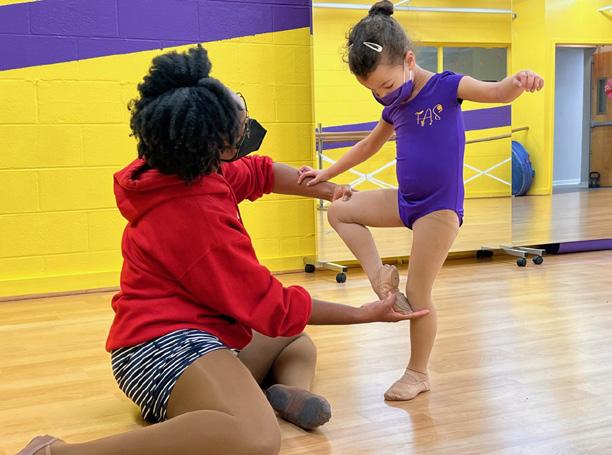
color don’t have the means to be in an arts program. That causes so many other issues,” Zuri laments. “The arts is a place that can help these kids stay on track and maintain good grades in school.” Although the kids Zuri works with are generally too young to express how much these opportunities mean to them, the chorus of hugely appreciative parents grows louder with every scholarship awarded.
A true advocate for the arts, Zuri suggests the benefits of dance are especially effective at molding more confident kids. “Putting yourself on stage is a form of vulnerability. When you’re out there in front of an audience, it gives you self-confidence. You also learn to be disciplined by showing up on time, dressed and ready to perform.” The value of teamwork is another major emphasis at the Foreman Arts School. “Before a performance, we say affirmations — I am beautiful, I am confident, I am brave, I am strong, I am smart. We all come together and say it. It makes a difference, to say that from a young age,” notes Zuri. “If someone falls, you help them up.”
Finding Your ‘Why’
Zuri’s version of success is defined in terms completely outside of herself. “It’s important to have a ‘why,’ the thing that gets you out of bed every morning,” says Zuri. “My why with the Foreman Arts School is making sure the next generation has an opportunity.” She adds, “It’s important for this generation to change the face of Broadway, change the face of television,” she says. “That means putting more people of color on screen and on stage. I’m looking forward to the day that I see one of my students on Broadway, appear in a movie — something that demonstrates they were able to follow their dream.”
“Putting yourself on stage is a form of vulnerability. When you’re out there in front of an audience, it gives you self-confidence.”
16 || Magazine || amda.edu
Zuri Foreman and a student at the Foreman Arts School
TUNE IN
The small screen becomes larger than life with AMDA graduates delivering showstopping performances across streaming platforms. Wherever you’re tuning in from, escape into these binge-worthy shows starring some of AMDA’s most prolific graduates.
THE QUEEN’S GAMBIT
“The Queen’s Gambit” (Netflix) follows Beth Harmon’s rise to meteoric fame as a chess star, while she privately struggles with addiction.
AMDA Graduate: Russell Dennis Lewis as Mike
HOLLYWOOD
Ryan Murphy’s “Hollywood” (Netflix) takes a stylized plunge into Old Hollywood, imagining what Tinseltown might have been if early studios had embraced the diverse truths of aspiring stars.
AMDA Graduate: Jeremy Pope as Archie Coleman
SCHITT’S CREEK
Fan favorite “Schitt’s Creek” (Netflix) set the record for most Emmy wins in a single season for a comedy series, as members of the opulent Rose family find themselves stripped of their fortune and struggling to find a new normal in the strange little town they once bought as a joke.

AMDA Graduate: Rizwan Manji as Ray Butani

ORANGE IS THE NEW BLACK
The female inmates of Litchfield in the breakout hit “Orange Is the New Black” (Netflix) will have you grinning one moment and sobbing the next.
AMDA Graduates: Asia Kate Dillon as Brandy Epps and Madeline Brewer as Tricia Miller
POSE
FX’s groundbreaking series “Pose” (Hulu) shines the spotlight on a powerful LGBTQIA+ cast starting their own house in New York City’s 1980s ballroom scene.
AMDA Graduates: J. Cameron Barnett as Castle and Jeremy Pope as Christopher
THE HANDMAID’S TALE
The critically acclaimed, Emmy Award–winning series “The Handmaid’s Tale” (Hulu) plunges viewers into the dystopian world of Gilead and the turbulent journeys of women forced into sexual servitude while plotting to escape.

AMDA Graduate: Madeline Brewer as Janine Lindo
BILLIONS
Hit drama series “Billions” (Hulu) centers around the movers-andshakers and power struggles within New York’s high finance scene.
AMDA Graduates: Asia Kate Dillon as Taylor Mason and Sarah Stiles as Bonnie Barella
AND JUST LIKE THAT…
Catch up with legendary friends Carrie, Miranda and Charlotte from “Sex and the City” as they navigate life and love in their 50s in the spin-off series “And Just Like That…” (HBO Max).
AMDA Graduate: Christopher Jackson as Herbert Wexley
HIGH SCHOOL MUSICAL: THE MUSICAL: THE SERIES With multiple seasons and several feature specials, it’s always showtime for the Wildcats in “High School Musical: The Musical: The Series” (Disney+).
AMDA Graduates: Frankie A. Rodriguez as Carlos, Vasthy Mompoint as Krystal, and Jesse Tyler Ferguson as Marvin
THE MARVELOUS MRS. MAISEL
“The Gilmore Girls” creator Amy Sherman-Palladino’s “The Marvelous Mrs. Maisel” (Amazon Prime) follows Midge Maisel from housewife to fame as a stand-up comedian in 1950s-era New York.
AMDA Graduates: Bailey De Young as Imogene Cleary and Darius de Haas as Sammy and the singing voice of Shy Baldwin
MODERN FAMILY
“Modern Family” (Peacock) managed to break barriers while being hilarious in this contemporary classic mockumentary that explored the day-to-day lives of three distinct family setups within the Pritchett family.
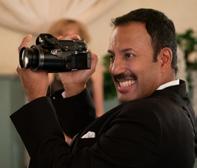
AMDA Graduate: Jesse Tyler Ferguson as Mitchell Pritchett

THE WOMAN IN THE HOUSE ACROSS THE STREET FROM THE GIRL IN THE WINDOW
“The Woman in the House across the Street from the Girl in the Window” (Netflix) follows a woman who seeks to find the truth after she witnesses a murder. At least, she believes she’s witnessed a murder.
AMDA Graduate: Cameron Britton as Buell
amda.edu || Magazine || 17
Clockwise from upper left: Madeline Brewer (right); Frankie A. Rodriguez (left); Cameron Britton; Jesse Tyler Ferguson; Rizwan Manji
COMMITMENT TO EQUITY AND INCLUSION
AMDA understands the unifying power of art. “Art humanizes us,” says Chianti Blackmon, vice president of Equity, Diversity and Inclusion. As a collective force, the Office of Equity, Diversity and Inclusion (OEDI) is responsible for ensuring there is both an inclusive and equitable platform of opportunity at AMDA to lift every voice, regardless of their background or how they identify. “We all learn differently, and art is integral in that way,” asserts Blackmon. “There are so many opportunities to teach and feel through art. People are moved by its different mediums and having that emotional tie in. That’s the power of it for me. It’s the place where change can happen.”
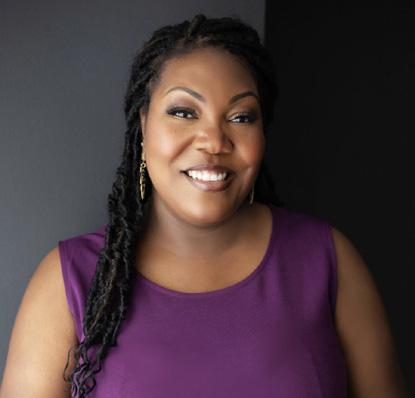
Both individuals and institutions have a role to play in creating a more equitable and just world. The team behind the OEDI is specifically dedicated to providing resources, coaching, consultation and strategies to help lead the college and conservatory toward a more equitable and just future through policy, classroom practices, activities and addressing workplace climate. Tasked with bringing AMDA’s vision of equity into fruition, the office is committed to institution-wide leadership that builds, strengthens and sustains a culturally conscious and responsive environment. Blackmon is quick to note that before these initiatives, AMDA had already been making intentional efforts to dismantle archaic industry practices known to disenfranchise minoritized groups. The OEDI was formally instituted to bolster these efforts and perform more intentional work in promoting diversity.
OEDI Initiatives
The Office of Equity, Diversity and Inclusion provides ongoing training and development designed to increase awareness and community support for a wide range of diversity issues. Blackmon recounts recent training sessions, including AntiRacism I: Why Now, Why AMDA; A Brief History of Disability in Dance; Language as a Basis for Inclusive Teaching; Accessibility at AMDA; and Navigating Hot Buttons and Triggers. Born directly from listening circles organized following the death of George Floyd, the antiracism workshops introduced by Blackmon and her colleagues were designed to provide AMDA
faculty and staff with crucial insight on navigating the many difficult conversations regarding racial injustice that were happening around them.
From hosting listening circles to organizing workshops addressing how to communicate about racial barriers inside and outside of the classroom to supporting the LGBTQIA+ community, the office is ensuring students, faculty and staff see things through the lens of equity and inclusion. “These ongoing training sessions are just the tip of the iceberg,” assures Blackmon. “We’re not just addressing issues as they come up. We are institutionalizing this work, infusing it across our campuses.”
The team’s additional emphasis on reporting hate-bias incidents ensures AMDA is always seeking to champion diversity while eliminating complacency. AMDA strictly prohibits discrimination against any person on the basis of race; color; religion; national or ethnic origin; sex; sexual orientation; gender identity or status; marital, parental, familial, veteran or military service status; political affiliation; age; or disability.
The Work Ahead
Striving for equity can extend far beyond the performance space. AMDA is committed to creating and upholding the best standards and practices regarding casting for our students in our classrooms, on our stages and for our on-camera work. As an institution predicated on providing unsurpassed performing arts education to a diverse community of creative artists, AMDA has a responsibility to eliminate typecasting on the basis of race, gender, age, physicality, profession or personality. As an example of progressive policy in action, all roles are made available to any actor whose performance can maintain the integrity of the story and who can believably inhabit the character.
By discarding old perceptions and encouraging more open communication across campuses, AMDA and the OEDI are helping transform the landscape of the performing arts. It is AMDA’s hope one day soon to see these standards and practices realized across platforms for performing artists, including Broadway, national and international stages, film and television.
Blackmon and her team see limitless possibilities for the future with their deliberate work through the OEDI, acting
Introducing Chianti Blackmon, AMDA’s Vice President of EDI.
18 || Magazine || amda.edu
Chianti Blackmon
as thought leaders who can affect meaningful, indelible change at AMDA and industry-wide. “Developing an equity and inclusion committee is something I’m excited about,” says Blackmon while explaining the inclusivity of the team. “[We’re] inviting students and graduates to participate with current faculty and staff, having a body of folks moving our strategy forward who are thought leaders on our campus.”
Blackmon imagines one day offering AMDA students the opportunity to earn social justice certificates or forming a theatre troupe that specifically models the conversations and policies her department embodies. “The heart is there,” reflects Blackmon. “Now we just need to figure out the labor.”
Change Takes Time
Blackmon acknowledges that significant challenges remain. “Our society frequently adopts the capitalist mindset of ‘go, go, go,’ but we need to pace ourselves. True change takes time.” Blackmon believes students are coming to AMDA at a wonderful, pivotal time, because they’re being asked to disrupt the illusion of perfection and step into an educational institution where they’re given grace while they learn. In the face of adversity, she remains grateful and encouraged by the AMDA community at large. “Most of us are doing the best we can with the tools we have at that moment. My area is sharpening those tools and helping students add more to their inventory. When students leave AMDA, they leave with a dynamic toolbox for the arts — and for life.”
AMDA’s Commitment to Equity, Diversity and Inclusion
AMDA is dedicated to dismantling existing structures that historically exclude and oppress marginalized groups. This commitment requires each of us to take responsibility to actively grow and preserve AMDA’s diverse community and culture. As such, AMDA will actively elevate and prioritize equity, diversity, inclusion and a strong sense of belonging in the curriculum, creative productions, services and administration. AMDA will steadily continue the crucial work toward the recruitment, retention and advancement of students, faculty and staff from underrepresented populations in higher education and the performing arts.

JURCZYK/ADOBE STOCK
MONIKA
amda.edu || Magazine || 19
“When students leave AMDA, they leave with a dynamic toolbox for the arts — and for life.” — Chianti Blackmon
AMDA ON BROADWAY
AMDA earned the #2 spot on Playbill.com’s Big 10 2022: The 10 Most Represented Colleges on Broadway in the 2021-2022 Season. In 2022 alone, 44 AMDA graduates performed in 29 productions including the hit musicals Hamilton, SIX, A Strange Loop and more.
The Book of Mormon
Kristen Jeter ’09
Role: Swing and Nabulungi (understudy)
Eddie Olmo II ’15 Role: Vacation Swing
Ayla Stackhouse ’16 Role: Swing CoCo Smith ’15 Role: Vacation Swing
For Colored Girls Who Have Considered Suicide / When the Rainbow Is Enuf Kenita R. Miller ’00 Role: Lady in Red
Freestyle Love Supreme
Christopher Jackson ’94 Role: Rotating Company Member
A Beautiful Noise: The Neil Diamond
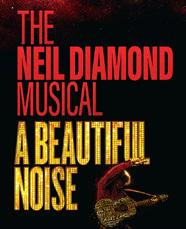
Musical Samantha Gershman ’09 Role: Swing
Ain’t No Mo’
Ebony Marshall-Oliver ’05 Role: Passenger #4
Caroline, or Change
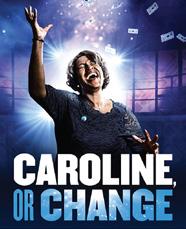
Caissie Levy ’02 Role: Rose Stopnick Gellman
Harper Miles ’14 Role: Radio 3
Anastacia McCleskey ’03 Role: Dotty Moffett
Chicago
Girl from the North Country Housso Semon ’11 Role: Swing
Macbeth

Asia Kate Dillon ’03 Role: Malcolm
MJ: The Musical John Edwards ’06 Role: Ensemble Michael Harmon ’21 Role: Swing
Moulin Rouge! Karli Dinardo ’13 Role: Swing, Nini (understudy) and Dance Captain
Kevin Curtis ’04 Role: Ensemble
The Piano Lesson
Trai Byers ’07 Role: Avery Ray Fisher ’07 Role: Lymon
SIX
Leandra Ellis-Gaston ’15 Role: Anne Boleyn
Brennyn Lark ’14 Role: Catherine Parr
Brittney Mack ’10 Role: Anna of Cleves Joy Woods ’19 Role: Catherine Parr
Some Like It Hot
Jarvis B. Manning Jr. ’06 Role: Ensemble J. Harrison Ghee ’09 Role: Jerry/Daphne
A Strange Loop
Kyle Ramar Freeman ’13 Role: Usher and Thought 4, 5, 6 (understudy)
Hadestown
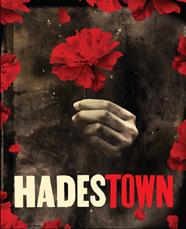
Soara-Joye Ross ’98 Role: Fate and Persephone (understudy)
Ain’t Too Proud: The Life and Times of the Temptations
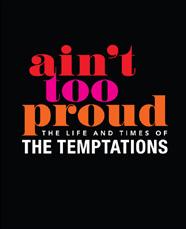
Taylor Symone Jackson ’13
Role: Johnnie Mae and Mary Wilson
Jarvis B. Manning Jr. ’06 Role: Al Bryant and Norman Whitfield
Morgan McGhee ’15 Role: Mama Rose, Florence Ballard and Tammi Terrell
Aladdin
Netanel Bellaishe ’10
Role: Ensemble and Henchman
Josh Drake ’11
Role: Ensemble and Kassim (understudy)
Carissa Fiorillo ’10 Role: Ensemble and Swing
Charity Angél Dawson ’05
Role: Mama Morton
Hamilton
Krystal Joy Brown ’04 Role: Eliza
Jennie Harney-Fleming ’10 Role: Angelica Schuyler
Alexander Ferguson ’11 Role: Hamilton, Burr, Laurens and King George III (standby)
Kyle Scatliffe ’09 Role: Marquis de Lafayette/Thomas Jefferson
Mrs. Doubtfire J. Harrison Ghee ’09 Role: Andre Mayem Charity Angél Dawson ’05 Role: Wanda Sellner
Take Me Out

Jesse Tyler Ferguson ’95 Role: Mason Marzac
Tina: The Tina Turner
Musical Carla Stewart ’10 Role: Ensemble
The Collaboration
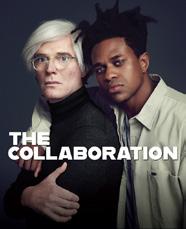
Jeremy Pope ’12
Role: Jean-Michel Basquiat
Company
Christopher Sieber ’89 Role: Harry
Into the Woods
Albert Guerzon ’00 Role: Cinderella’s Father
Leopoldstadt
Caissie Levy ’02 Role: Ava
The Music Man
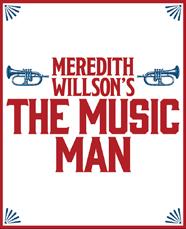
Maria Briggs ’11 Role: Swing, Zaneeta Shinn (understudy) and Dance Captain
Paradise Square
Colin Cunliffe ’00 Role: Ensemble
Leandra Ellis-Gaston ’15 Role: Tina Turner (understudy), Swing and Dance Captain
Wicked
Jenny Florkowski ’01 Role: Ensemble and Universal Swing
20 || Magazine || amda.edu
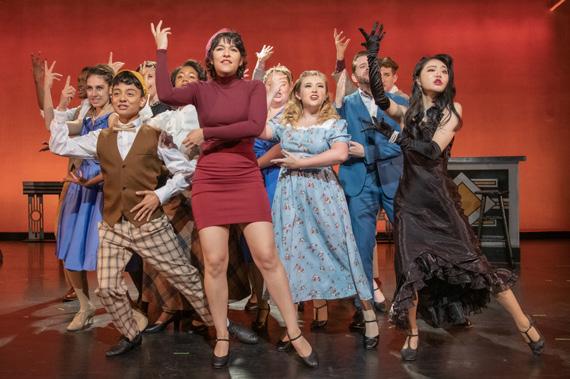


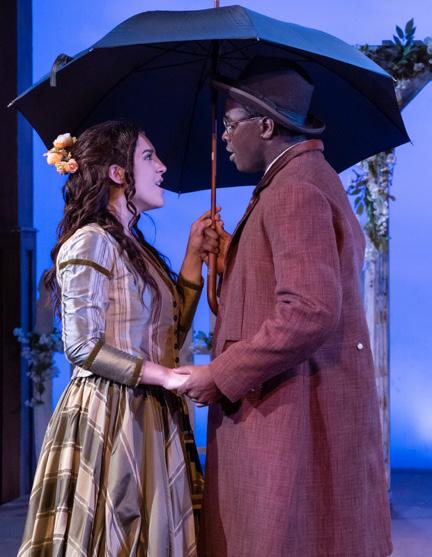

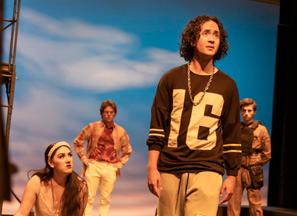
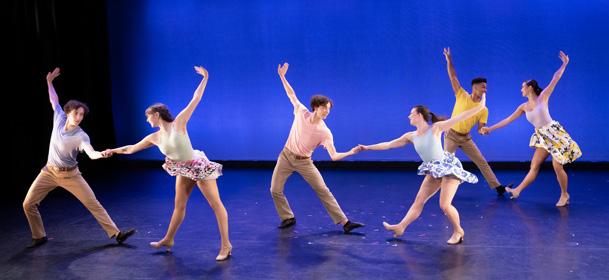
 Musical Theatre Showcase, New York City campus
Drama Showcase, New York City campus
25th Annual Putnam County Spelling Bee, Music Theatre production, Los Angeles campus
Drama Showcase, New York City campus
Romeo and Juliet, Acting production, Los Angeles campus
Dance Theatre Showcase, New York City campus
Little Women, Music Theatre production, Los Angeles campus
KRISTINA BUMPHREY
KRISTINA BUMPHREY
TRAE
PATTON
TRAE
PATTON
KYLE FROMAN
SPENCER
PAZER
DANA PLEASANT
Dance Theatre production, Los Angeles campus
JOSH ROSE
Musical Theatre Showcase, New York City campus
Drama Showcase, New York City campus
25th Annual Putnam County Spelling Bee, Music Theatre production, Los Angeles campus
Drama Showcase, New York City campus
Romeo and Juliet, Acting production, Los Angeles campus
Dance Theatre Showcase, New York City campus
Little Women, Music Theatre production, Los Angeles campus
KRISTINA BUMPHREY
KRISTINA BUMPHREY
TRAE
PATTON
TRAE
PATTON
KYLE FROMAN
SPENCER
PAZER
DANA PLEASANT
Dance Theatre production, Los Angeles campus
JOSH ROSE
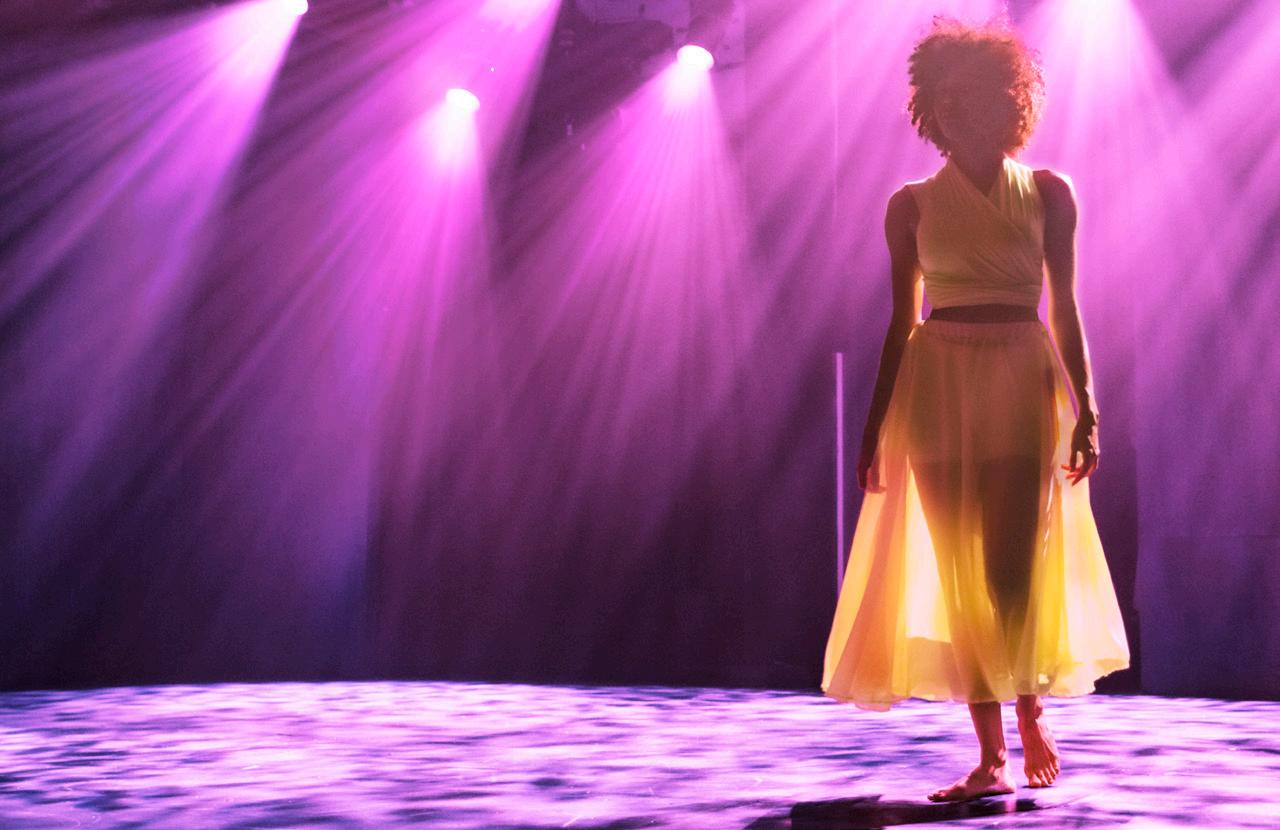
Study and perform in New York City and Los Angeles Earn your degree online For information about our programs, and to schedule an audition, visit amda.edu Bachelor’s and Associate Degrees Acting Musical Theatre Dance Theatre Performing Arts Master’s Degrees Theatre Screenwriting High School and Gap Programs















 JOAN MARCUS
Brittney Mack (center) as Anna of Cleves in SIX on Broadway
JOAN MARCUS
Brittney Mack (center) as Anna of Cleves in SIX on Broadway






























 Musical Theatre Showcase, New York City campus
Drama Showcase, New York City campus
25th Annual Putnam County Spelling Bee, Music Theatre production, Los Angeles campus
Drama Showcase, New York City campus
Romeo and Juliet, Acting production, Los Angeles campus
Dance Theatre Showcase, New York City campus
Little Women, Music Theatre production, Los Angeles campus
KRISTINA BUMPHREY
KRISTINA BUMPHREY
TRAE
PATTON
TRAE
PATTON
KYLE FROMAN
SPENCER
PAZER
DANA PLEASANT
Dance Theatre production, Los Angeles campus
JOSH ROSE
Musical Theatre Showcase, New York City campus
Drama Showcase, New York City campus
25th Annual Putnam County Spelling Bee, Music Theatre production, Los Angeles campus
Drama Showcase, New York City campus
Romeo and Juliet, Acting production, Los Angeles campus
Dance Theatre Showcase, New York City campus
Little Women, Music Theatre production, Los Angeles campus
KRISTINA BUMPHREY
KRISTINA BUMPHREY
TRAE
PATTON
TRAE
PATTON
KYLE FROMAN
SPENCER
PAZER
DANA PLEASANT
Dance Theatre production, Los Angeles campus
JOSH ROSE
